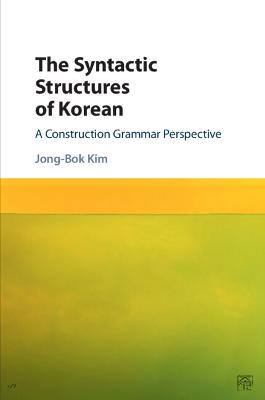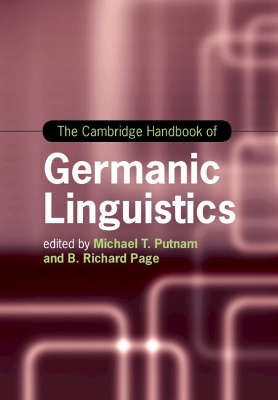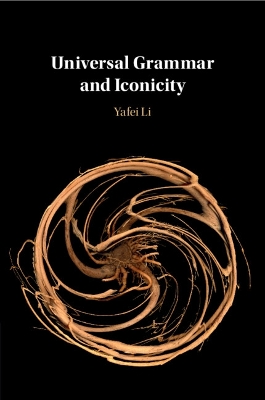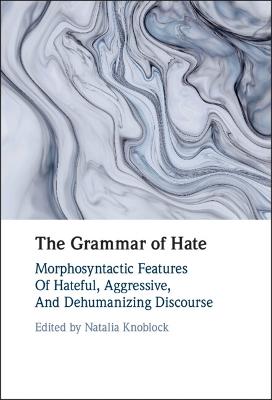Syntactic Structures of Korean
 -10%
portes grátis
-10%
portes grátis
Syntactic Structures of Korean
A Construction Grammar Perspective
Kim, Jong-Bok
Cambridge University Press
12/2022
359
Mole
Inglês
9781107503250
15 a 20 dias
Descrição não disponível.
1. Theoretical foundations; 1.1 Derivational vs constraint-based views; 1.2 Linguistic signs and feature structures; 1.3 Constructions and multiple inheritance hierarchy; 1.4 Korean phrase structure grammar; 1.5 Conclusion; 2. Noun phrases; 2.1 Basic properties; 2.2 Basic ordering restrictions; 2.3 Simple NP structures; 2.4 NPs with phrasal determinants; 2.5 Conclusion; 3. Case system; 3.1 Two basic issues; 3.2 Forming case-marked nominal expressions; 3.3 A construction-based case assignment system; 3.4 Complex case phenomena and predictions; 3.5 Case assignments in the auxiliary constructions; 3.6 Case assignments to the non-nominal expression; 3.7 Conclusion; 4. Auxiliary and complex predicate constructions; 4.1 Types of auxiliary verbs and morphosyntactic properties; 4.2 Three possible analyses; 4.3 Syntactic properties of complex predicates; 4.4 A construction-based analysis; 4.5 Conclusion; 5. Gerundive phrases and mixed categories; 5.1 Verbal and nominal properties; 5.2 Derivational analyses; 5.3 Inflectional treatment of the gerundive nominalizers; 5.4 A mixed-category analysis; 5.5 Consequences and further issues; 5.6 Conclusion; 6. Verbal nouns and light verb construction; 6.1 Basic properties; 6.2 On the properties of the light verb; 6.3 On the mixed properties of the verbal nouns; 6.4 Mixed properties within a multiple inheritance system; 6.5 Argument composition and syntactic structures; 6.6 Dissolving variations; 6.7 Conclusion; 7. Serial verb construction; 7.1 Serial verbs and general properties; 7.2 Grammatical properties of the SVCs; 7.3 Types of serial verb constructions; 7.4 A construction-based view; 7.5 Conclusion; 8. Negation and related phenomena; 8.1 Short form and long form negation; 8.2 Reviews on the derivational view; 8.3 Short form negation; 8.4 Long form negation; 8.5 Implications of the analysis; 8.6 Conclusion; 9. Coordination; 9.1 Two main types of nominal and verbal coordination; 9.2 Lexical properties of the coordinators; 9.3 More on the syntactic aspects; 9.4 Symmetric and asymmetric verbal coordination; 9.5 Conclusion; 10. Passive constructions; 10.1 Lexical vs syntactic passive; 10.2 Auxiliary syntactic passive; 10.3 A construction-based analysis; 10.4 Light-verb syntactic passive; 10.5 Inchoative and stative pseudo syntactic passive; 10.6 Conclusion; 11. Wh-questions; 11.1 Dependency between Wh-question and Q-particle; 11.2 Wh-questions and indefiniteness; 11.3 A construction-based analysis; 11.4 Key predictions; 11.5 Conclusion; 12. Topic and focus constructions; 12.1 Topic constructions; 12.2 Encoding focus; 12.3 Focus constructions; 12.4 Conclusion; 13. Relative clause constructions; 13.1 Some key properties; 13.2 Morpho-syntax of Korean relatives; 13.3 Standard relative clauses: externally headed; 13.4 Double relative clauses; 13.5 Internally headed relative clauses; 13.6 Pseudo-relative clauses; 13.7 Concluding remarks; 14. Honorification; 14.1 Basic properties of honorific agreement; 14.2 Honorification in a constraint-based grammar; 14.3 Conclusion.
Este título pertence ao(s) assunto(s) indicados(s). Para ver outros títulos clique no assunto desejado.
1. Theoretical foundations; 1.1 Derivational vs constraint-based views; 1.2 Linguistic signs and feature structures; 1.3 Constructions and multiple inheritance hierarchy; 1.4 Korean phrase structure grammar; 1.5 Conclusion; 2. Noun phrases; 2.1 Basic properties; 2.2 Basic ordering restrictions; 2.3 Simple NP structures; 2.4 NPs with phrasal determinants; 2.5 Conclusion; 3. Case system; 3.1 Two basic issues; 3.2 Forming case-marked nominal expressions; 3.3 A construction-based case assignment system; 3.4 Complex case phenomena and predictions; 3.5 Case assignments in the auxiliary constructions; 3.6 Case assignments to the non-nominal expression; 3.7 Conclusion; 4. Auxiliary and complex predicate constructions; 4.1 Types of auxiliary verbs and morphosyntactic properties; 4.2 Three possible analyses; 4.3 Syntactic properties of complex predicates; 4.4 A construction-based analysis; 4.5 Conclusion; 5. Gerundive phrases and mixed categories; 5.1 Verbal and nominal properties; 5.2 Derivational analyses; 5.3 Inflectional treatment of the gerundive nominalizers; 5.4 A mixed-category analysis; 5.5 Consequences and further issues; 5.6 Conclusion; 6. Verbal nouns and light verb construction; 6.1 Basic properties; 6.2 On the properties of the light verb; 6.3 On the mixed properties of the verbal nouns; 6.4 Mixed properties within a multiple inheritance system; 6.5 Argument composition and syntactic structures; 6.6 Dissolving variations; 6.7 Conclusion; 7. Serial verb construction; 7.1 Serial verbs and general properties; 7.2 Grammatical properties of the SVCs; 7.3 Types of serial verb constructions; 7.4 A construction-based view; 7.5 Conclusion; 8. Negation and related phenomena; 8.1 Short form and long form negation; 8.2 Reviews on the derivational view; 8.3 Short form negation; 8.4 Long form negation; 8.5 Implications of the analysis; 8.6 Conclusion; 9. Coordination; 9.1 Two main types of nominal and verbal coordination; 9.2 Lexical properties of the coordinators; 9.3 More on the syntactic aspects; 9.4 Symmetric and asymmetric verbal coordination; 9.5 Conclusion; 10. Passive constructions; 10.1 Lexical vs syntactic passive; 10.2 Auxiliary syntactic passive; 10.3 A construction-based analysis; 10.4 Light-verb syntactic passive; 10.5 Inchoative and stative pseudo syntactic passive; 10.6 Conclusion; 11. Wh-questions; 11.1 Dependency between Wh-question and Q-particle; 11.2 Wh-questions and indefiniteness; 11.3 A construction-based analysis; 11.4 Key predictions; 11.5 Conclusion; 12. Topic and focus constructions; 12.1 Topic constructions; 12.2 Encoding focus; 12.3 Focus constructions; 12.4 Conclusion; 13. Relative clause constructions; 13.1 Some key properties; 13.2 Morpho-syntax of Korean relatives; 13.3 Standard relative clauses: externally headed; 13.4 Double relative clauses; 13.5 Internally headed relative clauses; 13.6 Pseudo-relative clauses; 13.7 Concluding remarks; 14. Honorification; 14.1 Basic properties of honorific agreement; 14.2 Honorification in a constraint-based grammar; 14.3 Conclusion.
Este título pertence ao(s) assunto(s) indicados(s). Para ver outros títulos clique no assunto desejado.







